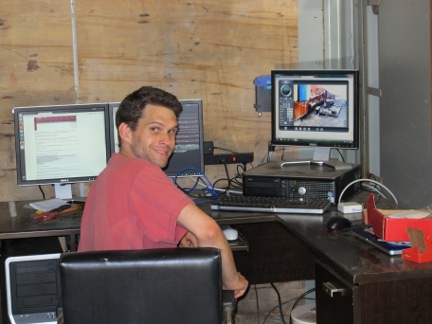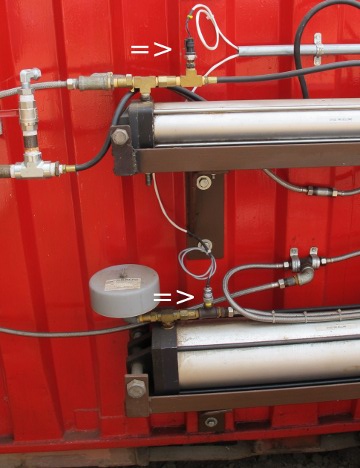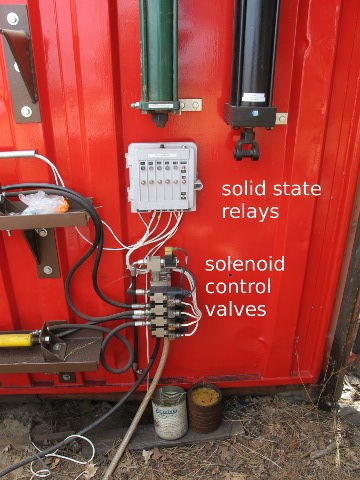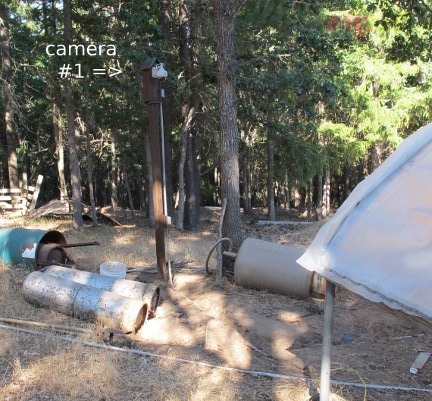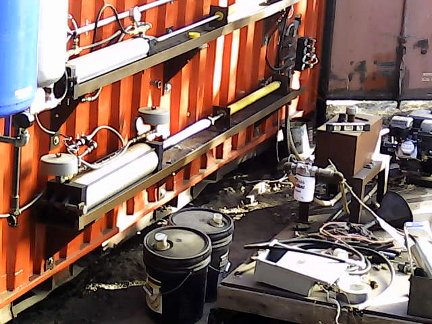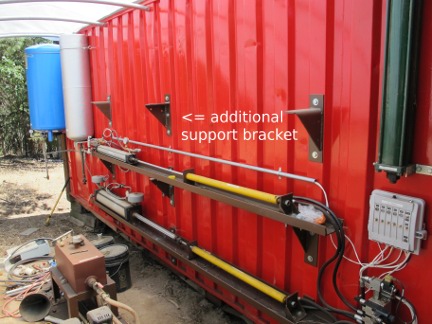Summer Update 2015Lots of fun progress to report. This spring, Ruben has been taking the lead on B2M work with a focus on bringing the computer side of the compressor system online. The goal of that work is to enable the computer control and synchronization of the four stages of the compressor, as well as to record operational details of the various runs for analytical purposes. This spring, we were able to get Stages 1 and 2 up to full operating pressure (60 psi and 250 psi), but before we take on the challenge of bringing Stages 3 and 4 (1,000 and 3,000 psi) online, we need to be able to operate the compressor from inside PowerLab. To ensure the safety of the operators, the compressor is built on the outside of a steel shipping container while the control and data recording equipment are located inside the shipping container.
Here's a shot of Ruben inside PowerLab working on developing the computer code that will read the sensors and control the solenoid valves. Each compression stage has a digital sensor that reads the pressure and passes that information along to the main control computer for processing.
There's a good deal of "choreography" involved as the computer tracks the pressures coming out of each of the pneumatic cylinders and use that data to decide which drive cylinder to trigger next. The way it work is that as soon as Stage 1 exceeds its target pressure, Stage 2 is triggered. When Stage 2 exceeds its target pressure, Stage 3 is triggered and so on. Since the target pressure for each stage is four times the previous target, if all the cylinders were the same size then it would take four cycles of Stage 1 for each cycle of Stage 2, 16 for each cycle of Stage 3 and 64 for each cycle of Stage 4. To speed things up, each stage is made up of different size cylinders. The initial goal was to require no more than two cycles of each stage before the next stage is triggered; a key goal of this part of the build is to see how close the plan matches performance, and then use that information to design the next build of the compressor to be more efficient.
The computer runs the compressor by activating solid-state relays that trigger specific valves that route hydraulic pressure to one of the drive cylinders and initiate the next cycle. Another key task that Ruben's moving forward involves monitoring the operation of the compressor. Since the operators will be inside PowerLab, we'll be using closed circuit cameras to monitor what's going on outside the container. The goal is to be able to observe the compressor in action, and to have a visual record of how the system performs.
To that end, we've installed the first of what will be a series of closed circuit cameras. This first camera is in a position to see all of the compressor, and it can be controlled from inside PowerLab so that the operator can zoom in on any particular component. Here's a screen shot from Camera #1 showing Stages 1 and 2.
In addition to the computer work, we're continuing the process of setting up the sub-systems, observing how they function, and then reworking any part that's not performing the way we want it to. For example, the long u-channel rails that hold the hydraulic and pneumatic cylinders were flexing more than I was comfortable with. So in order to increase rigidity, additional heavy braces were fabricated for the center of each rail. Here's a shot showing the additional heavy brackets installed for Stages 1,2 and 4.
A common question we get is something along the lines of "How long is it going to take to complete building this thing?" Well, True Fan subscriptions are currently 41% of the level we believe will be needed to move this work forward at the rate we're hoping for, so while we are making progress, there's "a long way to go and a short time to get there." To make matters even more challenging, as we move on to the next stage of this work, component and equipment costs will continue to rise, so it's a bit of a double bind. Our goal is to find 100 people who are willing to chip in a small amount each month to underwrite this work. If you know of anyone who professes a desire to see people be able to achieve energy soverignty using renewable technology, it's our earnest hope that you'll mention Biomass 2 Methanol to them and encourage them to help. your appreciative friend, ~~ Walt |
